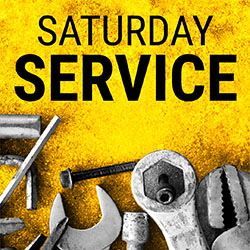- Posts: 53
- Thank you received: 26
Saturdays are for Service work.
- Garlic Pete
- Offline
- Moderator
-
Registered
Less
More
1 year 11 months ago #142
by Garlic Pete
Replied by Garlic Pete on topic Saturdays are for Service work.
Those really take you back in time, and yet are just as current and informative today as when they were posted.
Love the flying special Anartctic D8 14A.
Thanks for creating and maintaining this interesting and informative regular.
Pete.
Love the flying special Anartctic D8 14A.
Thanks for creating and maintaining this interesting and informative regular.
Pete.
Please Log in or Create an account to join the conversation.
- ironman3406
-
Topic Author
- Offline
- Admin
-
Registered
Less
More
- Posts: 49
- Thank you received: 16
1 year 11 months ago - 1 year 11 months ago #157
by ironman3406
Replied by ironman3406 on topic Saturdays are for Service work.
Two Heads are better than one!! Welcome once again to Saturday Service. This weeks information comes from the April 1955 edition of the Service Reporter magazine.
Connecting rod bearing inspection is a routine part of engine reconditioning. To make rod bearing inspection easier, large inspection openings are provided in the lower section of the cylinder blocks of all Caterpillar Diesel Engines.
Most mechanics agree that even with the large inspection openings, the most difficult part of connecting rod bearing inspection is cotter pin removal. However, the use of double head cotter pins in the rod bolts and castellated nuts of all Caterpillar Diesel Engines has made connecting rod bearing removal much easier.
Correct assembly of cotter pins is also beneficial. They should be installed with the heads facing the inspection opening.
Connecting rod bearing inspection is a routine part of engine reconditioning. To make rod bearing inspection easier, large inspection openings are provided in the lower section of the cylinder blocks of all Caterpillar Diesel Engines.
Most mechanics agree that even with the large inspection openings, the most difficult part of connecting rod bearing inspection is cotter pin removal. However, the use of double head cotter pins in the rod bolts and castellated nuts of all Caterpillar Diesel Engines has made connecting rod bearing removal much easier.
Correct assembly of cotter pins is also beneficial. They should be installed with the heads facing the inspection opening.
Last edit: 1 year 11 months ago by ironman3406.
Please Log in or Create an account to join the conversation.
- Garlic Pete
- Offline
- Moderator
-
Registered
Less
More
- Posts: 53
- Thank you received: 26
1 year 11 months ago #165
by Garlic Pete
Replied by Garlic Pete on topic Saturdays are for Service work.
Thanks for the latest, Ironman!
Nifty cotter pins to make a mechanic's job easier. What'll they think of next!
Keep 'em comin'!
Pete.
Nifty cotter pins to make a mechanic's job easier. What'll they think of next!
Keep 'em comin'!
Pete.
Please Log in or Create an account to join the conversation.
- ironman3406
-
Topic Author
- Offline
- Admin
-
Registered
Less
More
- Posts: 49
- Thank you received: 16
1 year 11 months ago #168
by ironman3406
Replied by ironman3406 on topic Saturdays are for Service work.
Well Pete there not used in current engines anymore, rod caps are all torqued to a specified torque and then turned so many degrees after that to achieve the proper bearing squish on the crank journal.
I can speak from experience that these double headed cotter pins sure make it easier to grab onto the pin for removal vs the single head style.
Glad you enjoyed the information
thanks
Nathan
I can speak from experience that these double headed cotter pins sure make it easier to grab onto the pin for removal vs the single head style.
Glad you enjoyed the information
thanks
Nathan
Please Log in or Create an account to join the conversation.
- Garlic Pete
- Offline
- Moderator
-
Registered
Less
More
- Posts: 53
- Thank you received: 26
1 year 11 months ago #173
by Garlic Pete
Replied by Garlic Pete on topic Saturdays are for Service work.
Yeah, fractured rods, torque to yield, torque turn.
How I yearn for the good old days.
Those fractured rods fascinate me. I just can't figure out how they do it in the first place and also can't figure out why shearing that thing off doesn't weaken the whole assembly.
I guess that's why I'm and accountant and not an engineer.
Pete.
How I yearn for the good old days.
Those fractured rods fascinate me. I just can't figure out how they do it in the first place and also can't figure out why shearing that thing off doesn't weaken the whole assembly.
I guess that's why I'm and accountant and not an engineer.
Pete.
Please Log in or Create an account to join the conversation.
- ironman3406
-
Topic Author
- Offline
- Admin
-
Registered
Less
More
- Posts: 49
- Thank you received: 16
1 year 11 months ago - 1 year 11 months ago #177
by ironman3406
Replied by ironman3406 on topic Saturdays are for Service work.
Saturday Service - Undercarriage maintenance
There are numerous variables that determine the life of an undercarriage, many of which can’t be controlled, such as the soil conditions and rainfall. However, undercarriage maintenance is controllable but often overlooked.
No. 1: Keep the tracks adjusted properly
Improperly adjusted tracks are the No. 1 reason for reduced wear life and performance. It is critical to keep tracks adjusted to the manufacturer specifications to lower undercarriage costs. Refer to your operation and maintenance manual for proper checks and adjustments as these procedures have changed over time and are different from machine to machine.
Tight tracks can make the undercarriage wear four times faster! When tracks are too tight, the contact loads between the components go up substantially these higher loads increase the rate at which components wear and decrease the overall wear life of the undercarriage. Tight tracks also increase the risk for dry joints, put additional stress on drivetrain components and increase fuel usage.
If the tracks are too loose, they can drag on the top of the roller frame, which is an additional wear point on the links. When you change applications, run the machine for an hour on the new site and then set the track tension to the correct specification. Re-check the tension as conditions change. For instance, if it rains overnight or during work hours, that will change the amount of packing and track tension will need to be readjusted.
No 2: Keep it clean
Material on the top of the roller frame can reduce undercarriage life. Cleaning out packed materials at the end of the day is a simple way to increase the wear life of the undercarriage. Material can easily build up on the top of the roller frame during normal operation. If the material is allowed to dry and harden overnight, it becomes much more abrasive to the undercarriage components. Removing this material at the end of the work day is easier and will increase component wear life.
No. 3: Guide it right
Track guiding keeps your undercarriage where it belongs — in the rollers! If a track is not properly guided, the link assembly can get on the outside of the rollers during a transition or during an encounter with larger ground objects. This results in high internal and external link assembly loads and can eventually lead to dry joints or link cracks.
No. 4: Daily Walk-Around
As part of your daily walk-around it’s a good idea to do a visual inspection of the undercarriage to look for loose or missing bolts, oil leaks, unusual wear patterns, loose or bent shoes, debris stuck in the undercarriage, etc. Taking just a few moments to identify and correct any issues can improve your undercarriage life.
Lastly operators play a critical role in determining the overall life of an undercarriage, right behind track tension and underfoot conditions. Sharp turns and counter rotations increase contact stresses between components. These maneuvers apply high stress to the tracks by braking one side or the other. If they are done more slowly, there is a lot less harm to the undercarriage. As speed increases, the amount of damage increases. High-speed reverse should also be avoided. The bushing and sprockets will see increased wear rates while running in reverse. There is sliding wear between the bushing and a sprocket at any speed. But as the speed increases, the amount of load and contact changes, which increases wear rates. Speed also tends to move the bushing out of the root of the sprocket to a point higher on the sprocket tooth, which also changes the contact pattern and results in higher wear. Side-hill operation accelerates undercarriage wear, especially on the downhill side of the machine. This is also where the track guides and roller flanges on both sides of the machine will work the hardest and see higher wear rates. It is suggested that operators turn the machine around so that both sides of the machine see equal time on the downhill side. Finally, listen to the machine. If something doesn’t sound quite right, investigate. You want to catch a frozen roller or other component failure before the component causes further undercarriage system damage.
Happy wrenching
Nathan
There are numerous variables that determine the life of an undercarriage, many of which can’t be controlled, such as the soil conditions and rainfall. However, undercarriage maintenance is controllable but often overlooked.
No. 1: Keep the tracks adjusted properly
Improperly adjusted tracks are the No. 1 reason for reduced wear life and performance. It is critical to keep tracks adjusted to the manufacturer specifications to lower undercarriage costs. Refer to your operation and maintenance manual for proper checks and adjustments as these procedures have changed over time and are different from machine to machine.
Tight tracks can make the undercarriage wear four times faster! When tracks are too tight, the contact loads between the components go up substantially these higher loads increase the rate at which components wear and decrease the overall wear life of the undercarriage. Tight tracks also increase the risk for dry joints, put additional stress on drivetrain components and increase fuel usage.
If the tracks are too loose, they can drag on the top of the roller frame, which is an additional wear point on the links. When you change applications, run the machine for an hour on the new site and then set the track tension to the correct specification. Re-check the tension as conditions change. For instance, if it rains overnight or during work hours, that will change the amount of packing and track tension will need to be readjusted.
No 2: Keep it clean
Material on the top of the roller frame can reduce undercarriage life. Cleaning out packed materials at the end of the day is a simple way to increase the wear life of the undercarriage. Material can easily build up on the top of the roller frame during normal operation. If the material is allowed to dry and harden overnight, it becomes much more abrasive to the undercarriage components. Removing this material at the end of the work day is easier and will increase component wear life.
No. 3: Guide it right
Track guiding keeps your undercarriage where it belongs — in the rollers! If a track is not properly guided, the link assembly can get on the outside of the rollers during a transition or during an encounter with larger ground objects. This results in high internal and external link assembly loads and can eventually lead to dry joints or link cracks.
No. 4: Daily Walk-Around
As part of your daily walk-around it’s a good idea to do a visual inspection of the undercarriage to look for loose or missing bolts, oil leaks, unusual wear patterns, loose or bent shoes, debris stuck in the undercarriage, etc. Taking just a few moments to identify and correct any issues can improve your undercarriage life.
Lastly operators play a critical role in determining the overall life of an undercarriage, right behind track tension and underfoot conditions. Sharp turns and counter rotations increase contact stresses between components. These maneuvers apply high stress to the tracks by braking one side or the other. If they are done more slowly, there is a lot less harm to the undercarriage. As speed increases, the amount of damage increases. High-speed reverse should also be avoided. The bushing and sprockets will see increased wear rates while running in reverse. There is sliding wear between the bushing and a sprocket at any speed. But as the speed increases, the amount of load and contact changes, which increases wear rates. Speed also tends to move the bushing out of the root of the sprocket to a point higher on the sprocket tooth, which also changes the contact pattern and results in higher wear. Side-hill operation accelerates undercarriage wear, especially on the downhill side of the machine. This is also where the track guides and roller flanges on both sides of the machine will work the hardest and see higher wear rates. It is suggested that operators turn the machine around so that both sides of the machine see equal time on the downhill side. Finally, listen to the machine. If something doesn’t sound quite right, investigate. You want to catch a frozen roller or other component failure before the component causes further undercarriage system damage.
Happy wrenching
Nathan
Last edit: 1 year 11 months ago by ironman3406.
Please Log in or Create an account to join the conversation.






